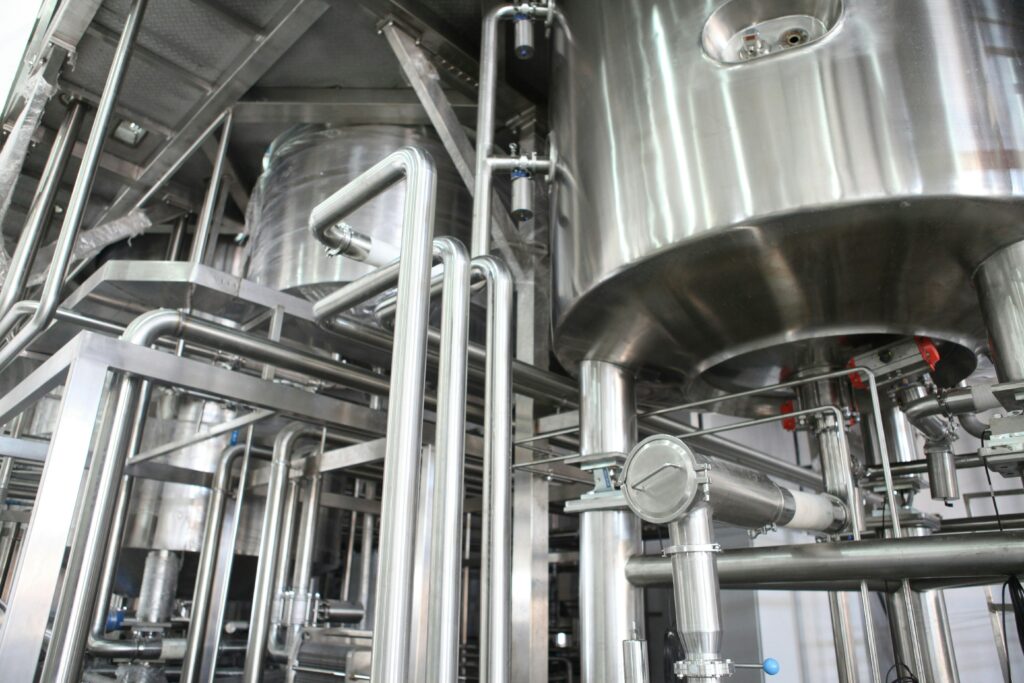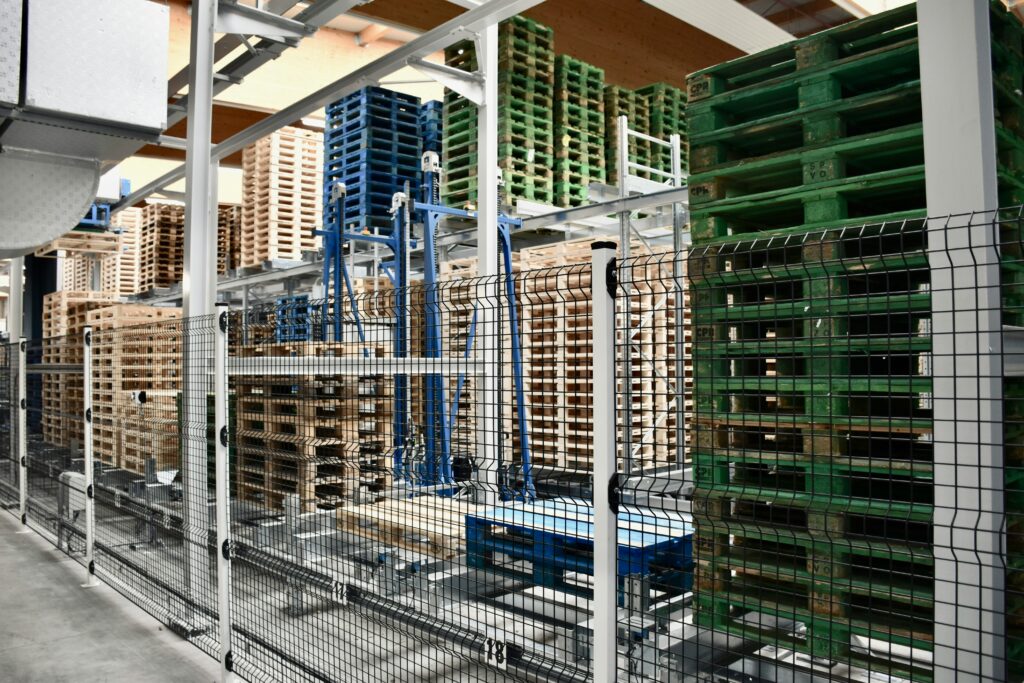Didecyldimethylammonium chloride (DDAC) is a chemical compound widely used in many industrial sectors for its disinfectant and antimicrobial properties.
Whether in hospitals, the food , or for the maintenance of agricultural premises, DDAC is essential for ensuring a hygienic environment. However, its handling and use require a thorough understanding of its chemical properties, specific applications, and the regulations governing its use.
This article explores didecyldimethylammonium chloride in detail, examining its characteristics, various uses, regulatory implications, and the importance of laboratory analysis to ensure its safety.
What is didecyldimethylammonium chloride?
Chemical definition and composition
Didecyldimethylammonium chloride (DDAC) is a compound belonging to the quaternary ammonium family. Quaternary ammonium compounds, also known as “quats,” are nitrogen-containing compounds where the nitrogen atom is linked to four alkyl groups. In the case of DDAC, the molecule consists of two decyl groups (C10) and two methyl groups, all linked to a central nitrogen atom. This particular structure gives DDAC its surfactant properties, i.e., its ability to act as a surfactant, which is essential for its disinfectant effects.
Chemical characteristics and regulatory identifiers
The DDAC is identified by several codes and numbers that allow it to be precisely distinguished in the field of regulated chemical substances:
- Chemical formula : C₂₂H₄₈ClN
- Molar mass : 362.08 g/mol
- CAS number : 7173-51-5
- EINECS number : 230-525-2
These identifiers, such as the CAS number, are essential to ensure the traceability of DDAC in production and analysis processes, facilitating compliance with safety standards and European regulations.
Synonyms and common names
DDAC is also known by other names, including “Quaternium 12” or “DDAC-C10.” These synonyms may be used depending on the context or industry, but they all refer to the same molecule with the same antimicrobial and disinfectant properties. It is therefore important for professional and industrial users to be familiar with these different names to ensure proper understanding of technical and regulatory data sheets.
What is didecyldimethylammonium chloride used for?
Applications in the medical and hospital sector
DDAC is widely used in the medical and hospital fields for its ability to eliminate a wide range of pathogenic microorganisms. As a powerful disinfectant, it is applied to surfaces and medical equipment to ensure sterilization and limit the spread of infections. Quaternary ammonium compounds, such as DDAC, are particularly effective against bacteria, fungi, and some viruses, making them an ideal choice for hospitals and clinics. It is also present in some topical antiseptics, although concentrations are carefully controlled to avoid skin irritation.
Use in the food industry
In the food industry, DDAC is commonly used to clean and disinfect food contact surfaces, particularly in processing plants and production lines. It is also used to eliminate microbial residues in storage areas and on equipment to prevent cross-contamination that could affect the quality and safety of food products. However, DDAC should be used with caution in this context, as it is subject to maximum residue limits (MRLs) in foodstuffs to ensure consumer safety.
Applications in agriculture
DDAC also finds applications in the agricultural sector, where it is used to disinfect farm premises, greenhouses, and even certain crops. Its effectiveness against a wide variety of microorganisms helps protect plants from diseases caused by fungi and bacteria, while maintaining sanitary conditions in agricultural production facilities. However, due to environmental safety standards, its use on crops intended for human consumption is strictly regulated, and dosages must be carefully controlled.
Other areas of use: pool maintenance and household products
Outside of industrial environments, DDAC is also used in household cleaning products and in pool maintenance as an algaecide. In the latter case, it works by eliminating algae that can grow in the water, thus ensuring clear water without biological residue. Due to its ability to eliminate microorganisms while being relatively stable in water, it is particularly suitable for this type of application.
Thanks to its disinfectant and antimicrobial properties, didecyldimethylammonium chloride has proven to be a valuable agent in many sectors. However, its use requires in-depth knowledge of specific dosages and regulations to ensure both product efficacy and end-user safety.

Properties of Didecyldimethylammonium Chloride
Physicochemical properties
DDAC has specific physicochemical properties that make it effective in its various applications. It is water-soluble and dissolves easily, making it easy to apply in the form of aqueous solutions for cleaning and disinfection. Its density at 20°C is 0.95 g/cm³, and it has a boiling point of 88°C and a flash point of 29°C. These characteristics allow its use in a variety of environments, including those requiring specific temperature conditions.
As a quaternary ammonium compound , DDAC is a cationic surfactant, meaning that it reduces the surface tension between molecules. This property promotes its uniform dispersion on surfaces and allows it to penetrate the cell membranes of microorganisms, thus leading to their destruction. This surfactant action is particularly beneficial for its applications in the industrial sector, where disinfection of large surfaces is often required.
Toxicological profile and handling precautions
DDAC is effective but requires special precautions due to its potential toxicity. Its toxicological profile shows that it can be irritating to skin and eyes and, at high concentrations, can cause burns or allergic reactions. The toxic effects of DDAC are most evident when it is handled in high concentrations or without adequate protection.
If accidentally ingested or comes into prolonged contact with skin, DDAC can cause serious adverse effects. When handling, it is recommended to wear protective equipment such as gloves, safety glasses, and masks to avoid direct contact. DDAC should be stored in well-sealed containers in a cool, ventilated area, away from any source of heat or flame due to its flammability.
Safety measures and transport procedures
In terms of safety, DDAC is classified under several hazard pictograms, including those indicating that it is flammable, irritant, and toxic to aquatic organisms. Handling precautions therefore include avoiding releases into the environment to limit the risk of water and soil contamination. For transport, DDAC is classified under UN 2920, which means that it must be packaged and transported according to strict standards to prevent any risks during transport.
Regulations and residue limits (MRLs) for didecyldimethylammonium chloride
Regulatory status in Europe and internationally
In Europe, DDAC is regulated by Directive 98/8/EC and associated amendments, which govern its use in biocidal and disinfectant products. The substance was approved for limited use in January 2010, but this initial authorization focused only on ornamental crops and expired in 2013. Since then, the use of DDAC in agriculture has been restricted, and any use in food products is subject to strict controls.
In 2020, the Biocidal Products Committee approved the use of DDAC for product types 1, 2, 3, and 4, namely products for food contact surfaces, surface disinfectants, and other products for veterinary use. This regulation requires marketing authorizations (MAs) for products containing DDAC, ensuring that only products that meet safety standards can be marketed.
Regulation of maximum residue limits (MRLs)
MRLs refer to the maximum amount of residues permitted in foodstuffs. In the case of DDAC, these residues can persist on food contact surfaces, requiring regular monitoring to avoid contamination of products intended for human consumption. Regulation (EU) No 396/2005 sets strict MRLs for DDAC in foodstuffs, initially set at a default MRL of 0.01 mg/kg. However, adjustments were made in 2014 by the European Commission to establish temporary MRLs based on available monitoring data and the opinion of the EFSA (European Food Safety Authority).
These temporary MRLs allow for the reconciliation of industrial use of DDAC with consumer protection, but manufacturers must closely monitor any regulatory changes. These limits aim to reduce health risks while maintaining the effectiveness of DDAC as a disinfectant in environments where food is handled.
Importance of MRLs for product safety
Compliance with MRLs for DDAC is essential to ensure food safety and prevent contamination. Food processing and agri-food companies must implement rigorous cleaning practices and use DDAC under controlled conditions. If MRLs are exceeded, sanctions may be imposed, and products may be withdrawn from the market, resulting in high costs and damage to companies' reputations.
Are you looking for an analysis?

Comparison with other quaternary ammoniums (e.g. dioctyl dimethyl ammonium chloride)
What is dioctyl dimethyl ammonium chloride?
Dioctyl dimethyl ammonium chloride is a quaternary ammonium compound similar to DDAC but differs in its chemical structure and, therefore, in some of its properties. In this molecule, the central nitrogen atom is linked to two octyl chains (C8) and two methyl groups. Like DDAC, dioctyl dimethyl ammonium chloride is a cationic surfactant, which means it also possesses antimicrobial properties useful in industrial disinfection and cleaning contexts.
Similarities between DDAC and dioctyl dimethyl ammonium chloride
Both compounds belong to the category of quaternary ammoniums and share several properties:
- Antimicrobial Properties : Both compounds are effective in eliminating bacteria, fungi, and some viruses. Due to their cationic properties, they disrupt the cell membranes of microorganisms, leading to their destruction.
- Similar applications : Like DDAC, dioctyl dimethyl ammonium chloride is used in the disinfection sector, particularly in hospitals, industrial and agricultural environments. Both are also present in household and professional cleaning products.
Differences and specificities
The differences between these two compounds lie in their alkyl chains: DDAC has two decyl chains (C10) while dioctyl dimethyl ammonium chloride has two octyl chains (C8). This structural difference results in variations in chemical stability and solubility. DDAC tends to have broader antimicrobial potency and is often preferred for more diverse applications. In contrast, dioctyl dimethyl ammonium chloride is sometimes used for more targeted uses, depending on industrial requirements.
Use together for increased effectiveness
In many formulations, DDAC is combined with other quaternary ammonium compounds, including dioctyl dimethyl ammonium chloride, for synergistic action. Combining these compounds improves antimicrobial efficacy by extending the spectrum of action against various types of microorganisms. These mixtures are common in multi-purpose disinfectants, particularly used in environments with high risks of microbial contamination, such as hospitals, food processing plants, and public places.

Laboratory analysis of didecyldimethylammonium chloride
Testing and analysis methodologies
The detection and quantification of DDAC in different samples requires sophisticated analytical techniques. One of the commonly used methods is HS-GC-MS (Headspace-Gas Chromatography-Mass Spectrometry) screening. This technique can detect the presence of DDAC and other volatile compounds in samples, using gas chromatography coupled with mass spectrometry for precise identification.
Sampling for HS-GC-MS must be carried out on sealed and inert supports to avoid any contamination. Samples are packaged in specific bottles, and the limit of quantification (LOQ) for DDAC varies from 0.1 to 10 mg/L, depending on the characteristics of the sample. The method used is often internal, i.e. developed and validated by the laboratory to adapt to the particularities of the compound analyzed.
Other common analytical techniques for DDAC
In addition to HS-GC-MS, LC-MS-MS (Liquid Chromatography-Mass Spectrometry) is frequently used for DDAC analyses, especially for liquid or aqueous samples. This technique allows for the separation, identification, and quantification of DDAC with high accuracy. GC-MS (Gas Chromatography-Mass Spectrometry) is also used, especially for more complex matrices or mixtures of volatile compounds.
Each method offers specific advantages: LC-MS-MS is particularly suitable for aqueous matrices, while GC-MS is suitable for volatile samples. The choice of method depends on the sample type, the expected concentration, and the regulatory requirements of the industry concerned.
Importance of these analyses for manufacturers
For manufacturers, these analyses are essential on several levels:
- Product Safety : Testing ensures that DDAC concentrations comply with regulatory limits, thereby ensuring product safety for end users.
- Regulatory compliance : By respecting the MRLs (Maximum Residue Limits), the analyses guarantee that the products comply with national and international regulations, essential for obtaining marketing authorizations.
- Contamination Prevention : By identifying any possible DDAC contamination, manufacturers can adjust their cleaning processes and avoid residue exceedances in final products, which is crucial in the food and pharmaceutical sectors.
Analytical methodologies for detecting didecyldimethylammonium chloride in the laboratory are therefore fundamental to ensuring the safety, compliance and efficacy of products. These analyses allow manufacturers to control the risks associated with residues and ensure rigorous monitoring of the quality of their manufacturing processes.




